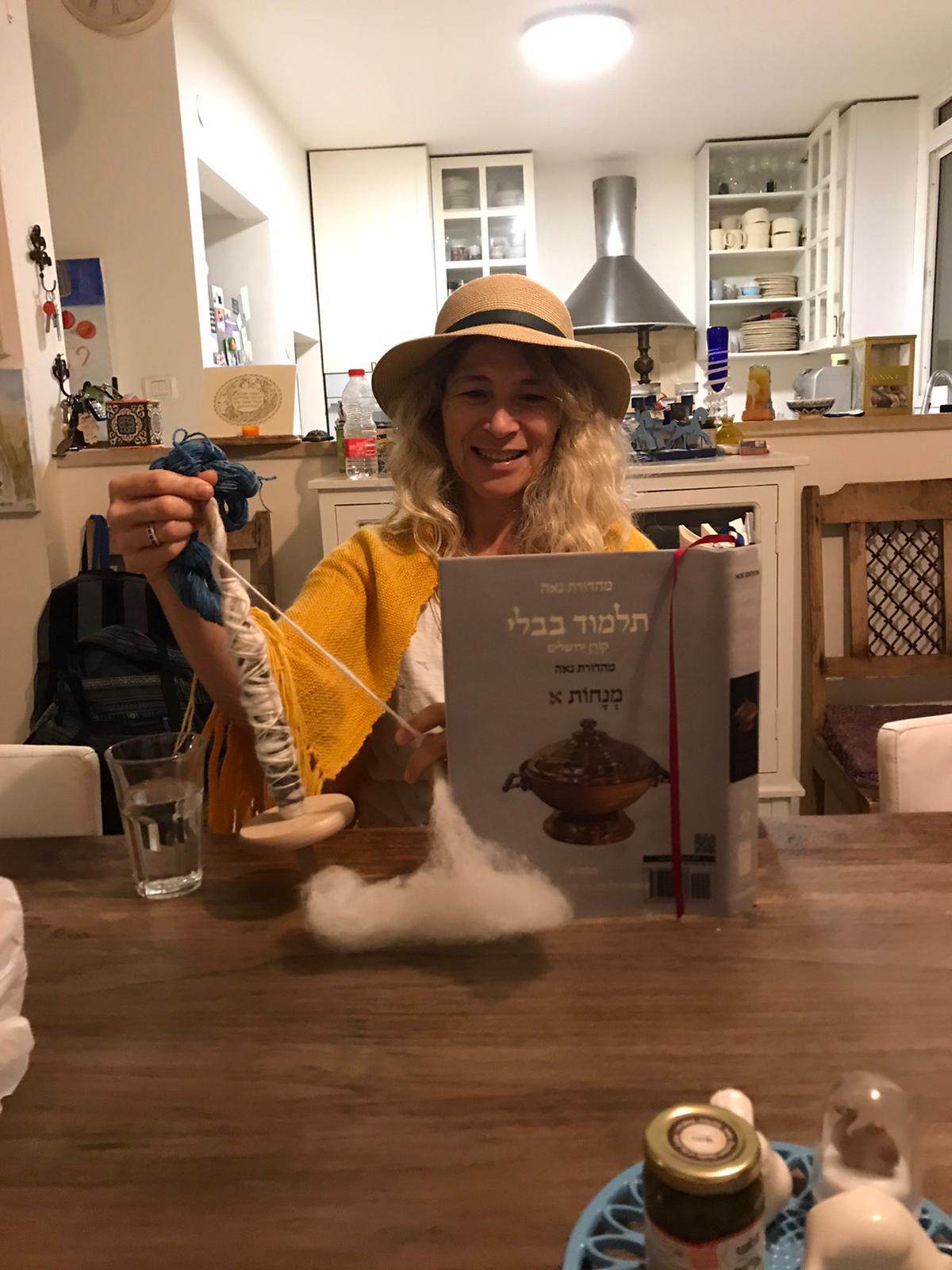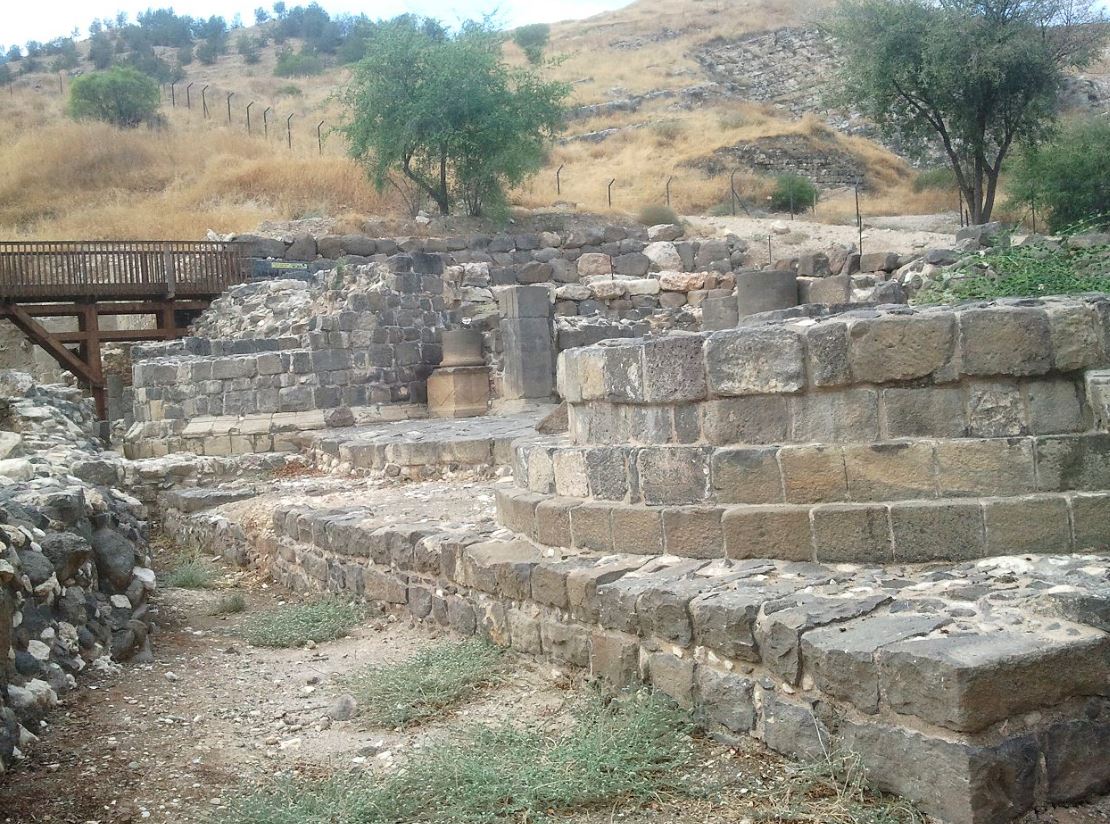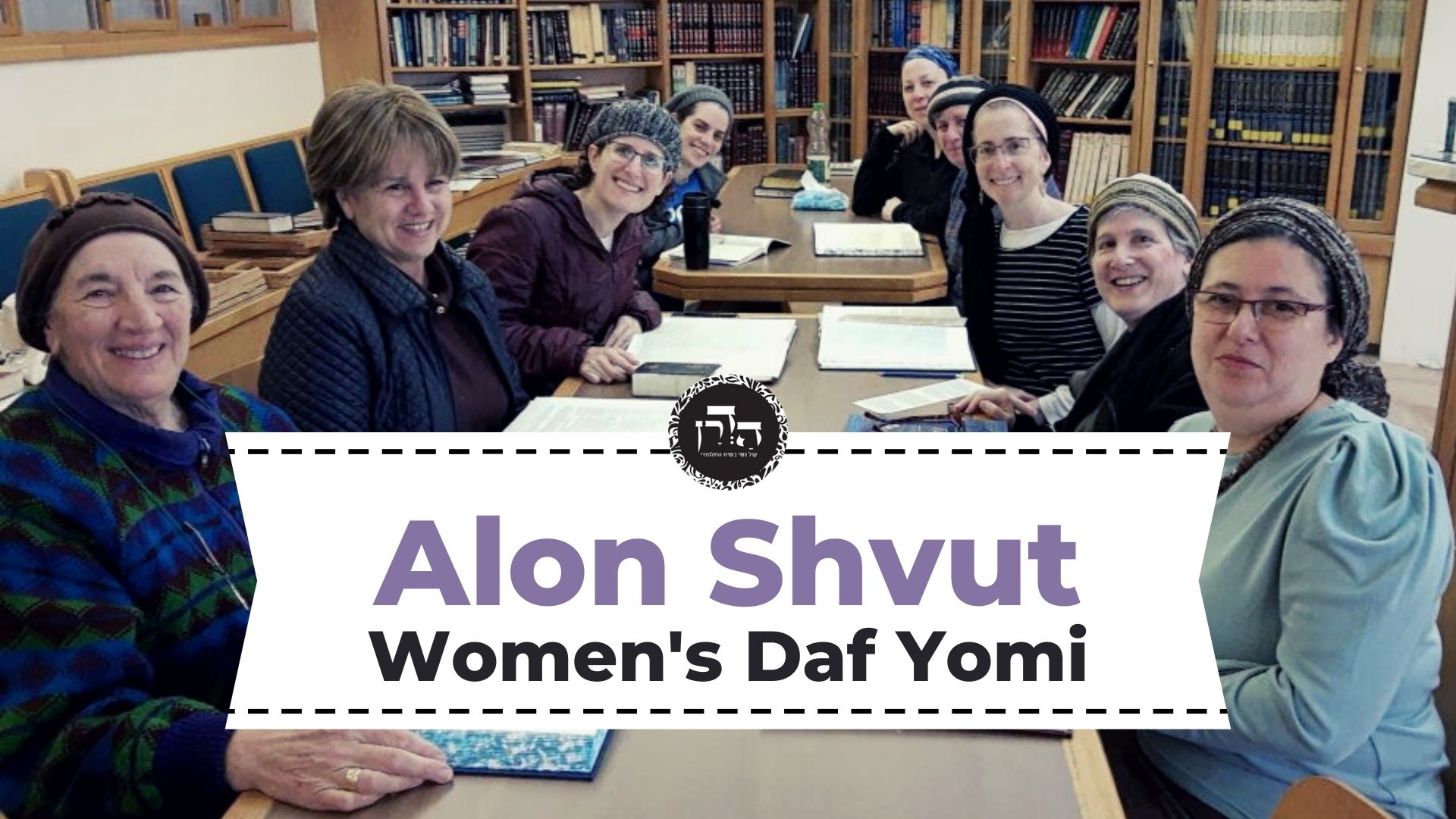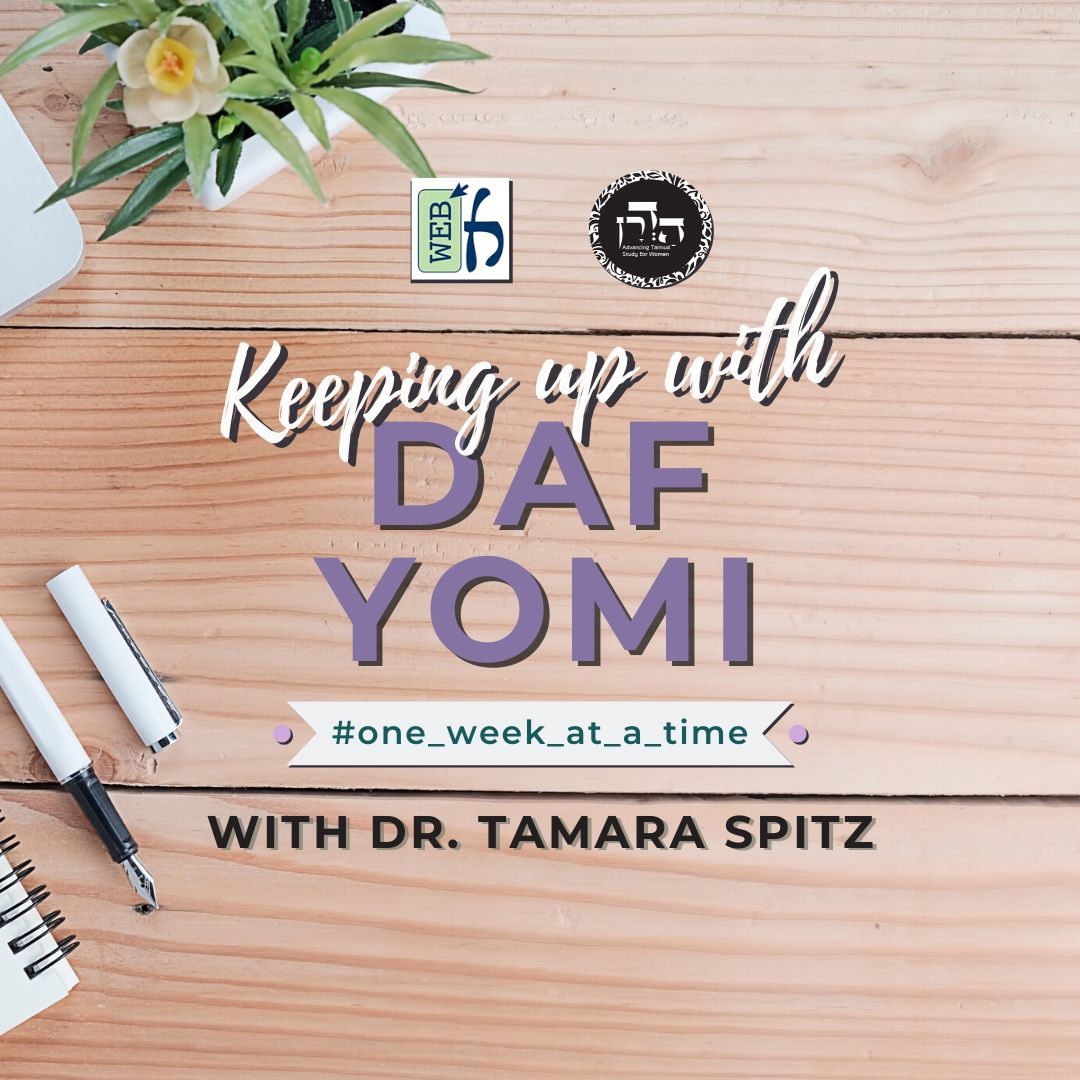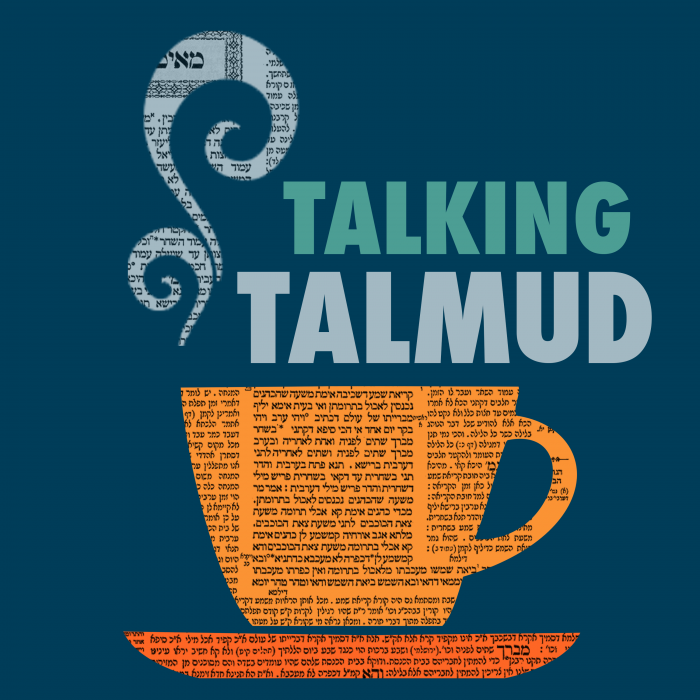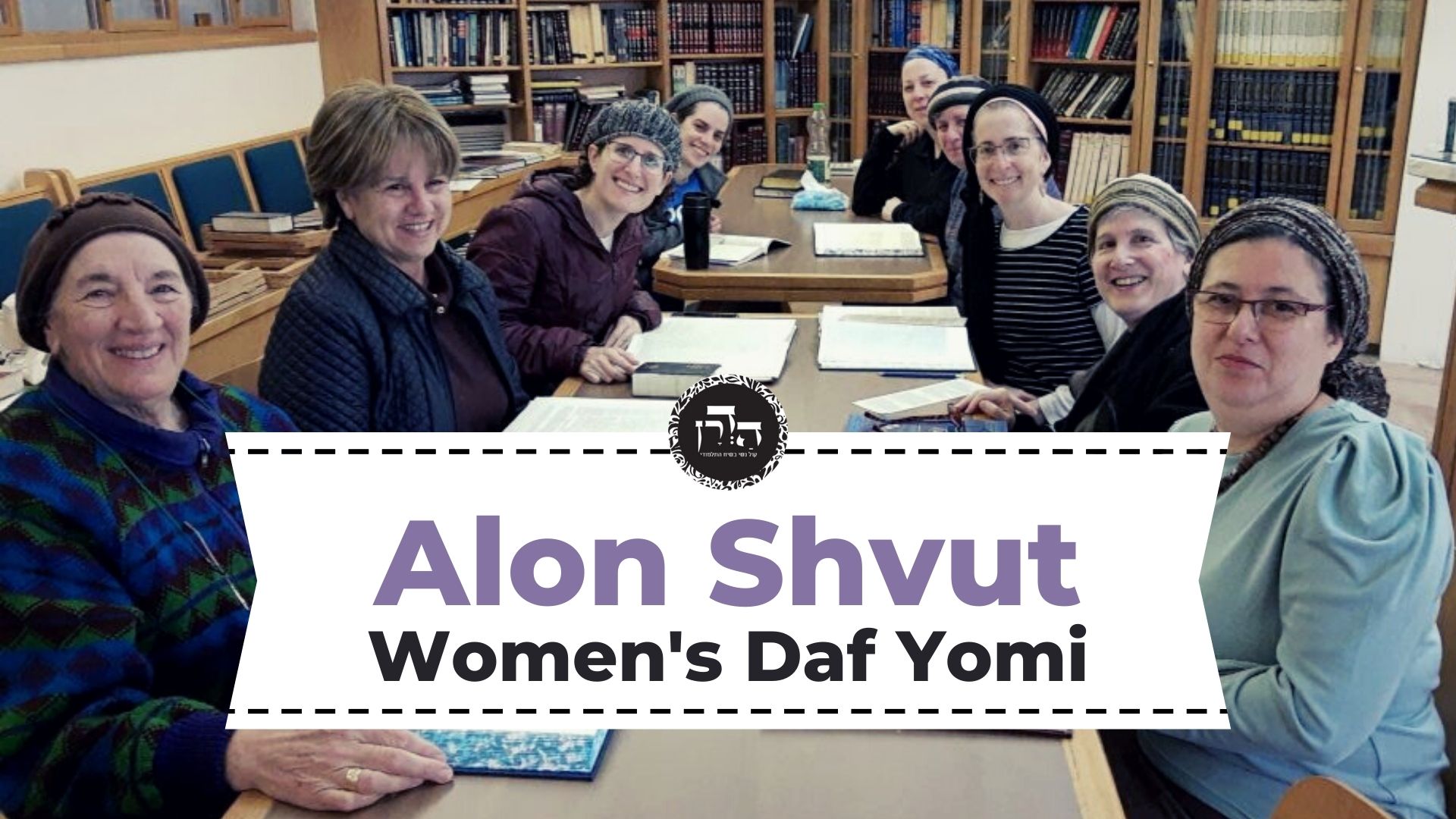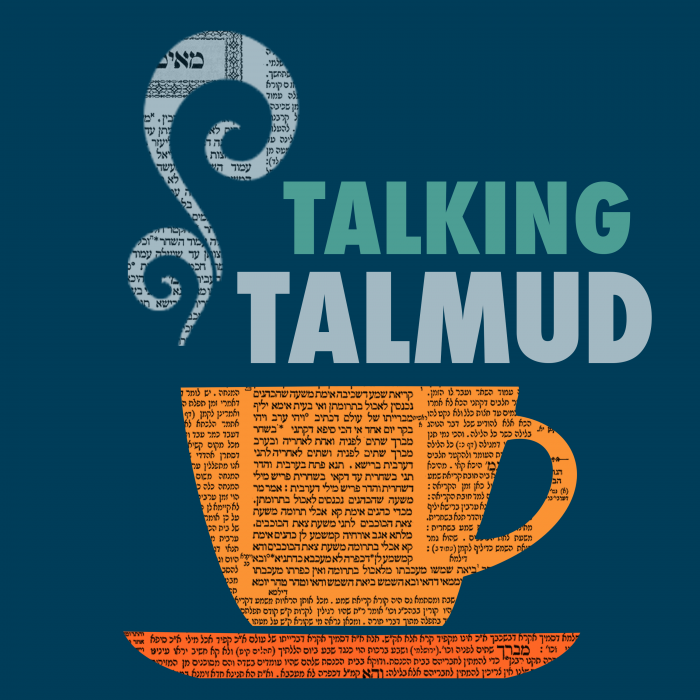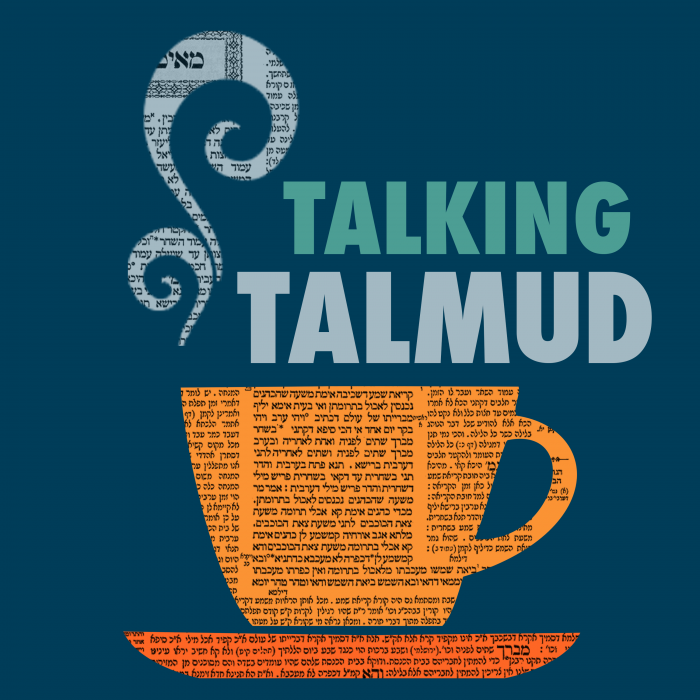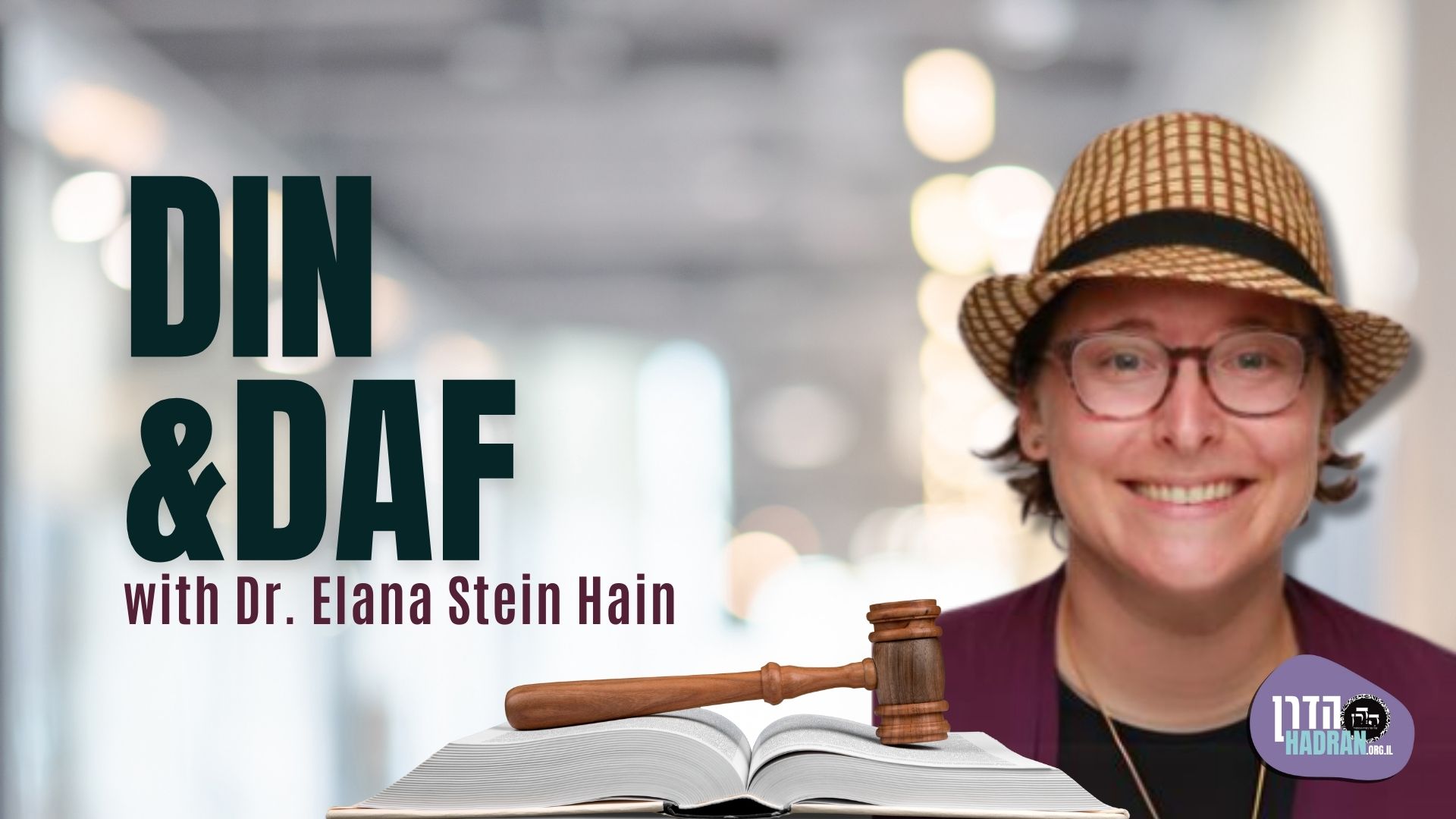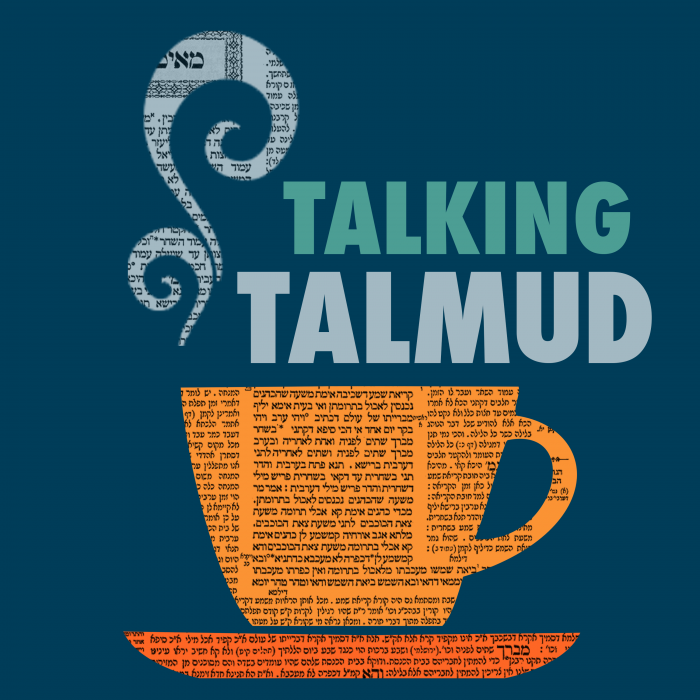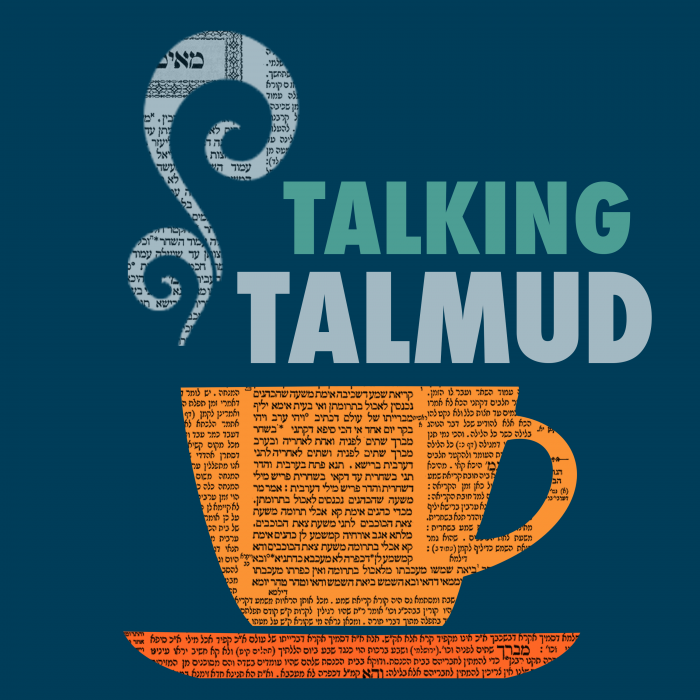More issues regarding the utensils that were used to measuring. Which types of sacrifices needed to be brought with libations?
This week’s learning is sponsored by Robert and Paula Cohen in loving memory of Joseph Cohen, Yosef ben Moshe HaCohen, z”l. “He was hard working, loved to sing, esp. as a chazan, and was very dedicated to his family and community.”
Want to dedicate learning? Get started here:


Today’s daily daf tools:
This week’s learning is sponsored by Robert and Paula Cohen in loving memory of Joseph Cohen, Yosef ben Moshe HaCohen, z”l. “He was hard working, loved to sing, esp. as a chazan, and was very dedicated to his family and community.”
Today’s daily daf tools:
Delve Deeper
Broaden your understanding of the topics on this daf with classes and podcasts from top women Talmud scholars.
New to Talmud?
Check out our resources designed to help you navigate a page of Talmud – and study at the pace, level and style that fits you.
The Hadran Women’s Tapestry
Meet the diverse women learning Gemara at Hadran and hear their stories.
Menachot 90
אִי לָא חֲזוּ לְעוֹלַת חוֹבָה קׇרְבִי לְעוֹלַת נְדָבָה, אֶלָּא הָכָא, אִי לָא מוֹקְמֵית לֵיהּ בְּמִילְּתֵיהּ – אֲשַׁם נְדָבָה מִי אִיכָּא?
therefore, even if they are no longer fit to be sacrificed as obligatory burnt offerings, for which they were originally consecrated, having now been slaughtered not for their own sake they can still be sacrificed as voluntary burnt offerings, without the need to fulfill the additional conditions that originally applied to them. But here, with regard to the guilt offering of a leper, if you do not maintain it in accordance with its original status and require it to be brought together with its libations, it can no longer be considered a guilt offering at all, as is there a voluntary guilt offering?
תַּנְיָא כְּוָותֵיהּ דְּרַבִּי יוֹחָנָן: אֲשַׁם מְצוֹרָע שֶׁשְּׁחָטוֹ שֶׁלֹּא לִשְׁמוֹ, אוֹ שֶׁלֹּא נָתַן מִדָּמוֹ עַל גַּבֵּי בְּהוֹנוֹת – הֲרֵי זוֹ עוֹלָה לְגַבֵּי מִזְבֵּחַ, וְטָעוּן נְסָכִים, וְצָרִיךְ אָשָׁם אַחֵר לְהַתִּירוֹ.
The Gemara notes that it is taught in a baraita in accordance with the opinion of Rabbi Yoḥanan: In the case of a guilt offering of a leper that one slaughtered not for its own sake, or in a case where one did not place some of its blood upon the leper’s right thumb and big toe, this guilt offering is still brought up upon the altar and requires libations, i.e., a meal offering and wine-libation; but since it was sacrificed incorrectly, the leper needs to bring another guilt offering to permit him to partake of offerings.
מַתְנִי׳ כׇּל מִדּוֹת שֶׁבַּמִּקְדָּשׁ הָיוּ נִגְדָּשׁוֹת, חוּץ מִשֶּׁל כֹּהֵן גָּדוֹל, שֶׁהָיָה גּוֹדְשָׁהּ לְתוֹכָהּ.
MISHNA: All measuring vessels that were in the Temple were such that they held the volume that they measured when their contents were heaped above the rim, except for the measuring vessel used to measure the flour for the griddle-cake offering of the High Priest, as its heaped measure, i.e., the quantity of flour held by a tenth of an ephah measuring vessel when heaped, was contained within its walls when the flour was leveled with the rim. This was due to the fact that the measuring vessel for the griddle-cake offering was slightly larger than the tenth of an ephah measuring vessel.
מִדֹּת הַלַּח, בֵּירוּצֵיהֶן קֹדֶשׁ; וּמִדֹּת הַיָּבֵשׁ, בֵּירוּצֵיהֶן חוֹל.
With regard to measuring vessels for liquids, their overflows, i.e., that which flows onto the outside of vessel’s walls, are sacred, but with regard to measuring vessels for dry substances, their overflows are non-sacred.
רַבִּי עֲקִיבָא אוֹמֵר: מִדֹּת הַלַּח קֹדֶשׁ, לְפִיכָךְ בֵּירוּצֵיהֶן קֹדֶשׁ. מִדֹּת הַיָּבֵשׁ חוֹל, לְפִיכָךְ בֵּירוּצֵיהֶן חוֹל. רַבִּי יוֹסֵי אוֹמֵר: לֹא מִשּׁוּם זֶה, אֶלָּא שֶׁהַלַּח נֶעֱקָר וְהַיָּבֵשׁ אֵינוֹ נֶעֱקָר.
Rabbi Akiva says that the reason for this difference is that since the measuring vessels for liquids are themselves sacred, therefore their overflows are sacred, and since the measuring vessels for dry substances are non-sacred, therefore their overflows are non-sacred. Rabbi Yosei says: The difference is not due to that factor. Rather, it is because the overflow of liquid was originally inside the vessel, where it became consecrated, and was then displaced, whereas the overflow of a dry substance was not displaced from inside the vessel, so it had not become consecrated.
גְּמָ׳ מַנִּי? אִי רַבִּי מֵאִיר – חַד גָּדוּשׁ הֲוָה, אִי רַבָּנַן – חַד מָחוּק הֲוָה.
GEMARA: The mishna and Gemara on 87a cite a dispute between the Rabbis and Rabbi Meir concerning the number and nature of the measuring vessels used for dry substances. In light of that dispute, the Gemara asks: In accordance with whose opinion is the mishna here? If you suggest it is in accordance with the opinion of Rabbi Meir, that is difficult: He holds that there were two measuring vessels that held a tenth of an ephah, but only one of them was such that it held its measure when heaped; the other one held its measure when leveled. And if you suggest it is in accordance with the opinion of the Rabbis, that is difficult: They hold there was only one measuring vessel that held a tenth of an ephah, and it held its measure when leveled. How can the mishna state that all measuring vessels in the Temple were heaped?
אָמַר רַב חִסְדָּא: לְעוֹלָם רַבִּי מֵאִיר, וּמַאי ״כׇּל מִדּוֹת״? כָּל מְדִידוֹת.
Rav Ḥisda said: Actually, the mishna is in accordance with the opinion of Rabbi Meir that only one of two measuring vessels that held a tenth of an ephah was such that it held its measure when heaped. And what does the mishna means when it states: All measuring vessels [kol middot] in the Temple were heaped? It means that that all measurements [kol medidot] performed with that measuring vessel were done when its contents were heaped above its rim.
מִדֹּת הַלַּח בֵּירוּצֵיהֶן קֹדֶשׁ, בְּמַאי קָא מִיפַּלְגִי?
§ The mishna discusses the status of overflows: The first tanna states simply that with regard to measuring vessels for liquids, their overflows are sacred, but with regard to measuring vessels for dry substances, their overflows are non-sacred. Rabbi Akiva explains that this distinction is a function of whether the measuring vessel is itself sacred. Rabbi Yosei explains it is function of whether the overflow had initially been inside the vessel. The Gemara asks: With regard to what matter do these three tanna’im disagree?
תַּנָּא קַמָּא סָבַר: מִדַּת הַלַּח נִמְשְׁחָה, בֵּין מִבִּפְנִים בֵּין מִבַּחוּץ; מִדַּת יָבֵשׁ נִמְשְׁחָה מִבִּפְנִים, וְלֹא נִמְשְׁחָה מִבַּחוּץ.
The Gemara explains: The first tanna holds that the measuring vessels for liquid items, e.g., wine for libations and oil, were anointed and thereby consecrated both on the inside and on the outside. Therefore, the overflow is consecrated as it comes in contact with the outside of the vessel’s walls. The measuring vessels for dry items, such as the flour for meal offerings, were anointed and consecrated only on the inside, but were not anointed on the outside. Therefore, the overflow is not consecrated when it comes into contact with the outside of the vessel’s walls.
וְרַבִּי עֲקִיבָא סָבַר: מִדַּת הַלַּח נִמְשְׁחָה בֵּין מִבִּפְנִים בֵּין מִבַּחוּץ, מִדַּת יָבֵשׁ לֹא נִמְשְׁחָה כׇּל עִיקָּר.
And Rabbi Akiva, who states the difference is due to whether the vessel is sacred or non-sacred, holds that the measuring vessels for liquid items were anointed on the inside and were not anointed on the outside, whereas the measuring vessels for dry items were not anointed at all, and they remained non-sacred and so could not consecrate the overflow.
וְרַבִּי יוֹסֵי סָבַר: אִידֵּי וְאִידֵּי נִמְשְׁחָה מִבִּפְנִים וְלֹא נִמְשְׁחָה מִבַּחוּץ, וְהָכָא הַיְינוּ טַעְמָא – דְּלַח נֶעֱקָר וּמִגַּוֵּוהּ דְּמָנָא קָא אָתֵי, וְהַיָּבֵשׁ אֵינוֹ נֶעֱקָר.
And Rabbi Yosei holds that this and that, i.e., both types of measuring vessels, were anointed only on the inside but were not anointed on the outside, and so here, this is the reason behind whether the overflow was sacred: As the overflow of liquid was originally inside the vessel and was then displaced, and it comes from the inside of the vessel, it is therefore consecrated. But the overflow of a dry substance was not originally inside the vessel and then displaced, and so it is never consecrated.
וְכִי נֶעֱקָר מַאי הָוֵי? גַּבְרָא לְמַאי דִּצְרִיךְ קָא מְכַוֵּין.
The Gemara questions this explanation of Rabbi Yosei’s opinion: But even if the overflow was previously inside the vessel and then displaced, what of it? A person intends to consecrate only that which he requires, and so even if the overflow had been inside the vessel it would not have been consecrated.
אָמַר רַב דִּימִי בַּר שִׁישְׁנָא מִשְּׁמֵיהּ דְּרַב, זֹאת אוֹמֶרֶת, כְּלֵי שָׁרֵת מְקַדְּשִׁין שֶׁלֹּא מִדַּעַת. רָבִינָא אָמַר: לְעוֹלָם אֵימָא לָךְ, כְּלֵי שָׁרֵת אֵין מְקַדְּשִׁין אֶלָּא מִדַּעַת, וּגְזֵרָה שֶׁמָּא יֹאמְרוּ מוֹצִיאִין מִכְּלֵי שָׁרֵת לְחוֹל.
Rav Dimi bar Shishna said in the name of Rav: That is to say that service vessels consecrate their contents even without the intent of the person using them. Ravina said: Actually, I will say to you that service vessels consecrate their contents only with the intent of the person using them, and by Torah law the overflows are not sacred. But the Sages issued a decree to regard them as sacred, lest people say that one may transfer a substance that has been consecrated in a service vessel to non-sacred status.
מוֹתֵיב רַבִּי זֵירָא: סִידֵּר אֶת הַלֶּחֶם וְאֶת הַבָּזִיכִין לְאַחַר הַשַּׁבָּת, וְהִקְטִיר אֶת הַבָּזִיכִין בַּשַּׁבָּת – פְּסוּלָה. כֵּיצַד יַעֲשֶׂה? יַנִּיחֶנּוּ לַשַּׁבָּת הַבָּאָה, שֶׁאֲפִילּוּ הוּא עַל שֻׁלְחָן יָמִים רַבִּים – אֵין בְּכָךְ כְּלוּם.
Rabbi Zeira raised an objection to this explanation from a mishna (100a): Each Shabbat, new shewbread and bowls of frankincense were arranged on the Table in the Sanctuary. They remained there until the following Shabbat, at which point the frankincense was burned, thereby permitting the shewbread to be eaten. If the priest arranged the bread and the bowls of frankincense on the Table after Shabbat, during the week, and then he burned the frankincense in the bowls on the Shabbat at the end of that week, the bread is disqualified, as it had not been on the Table for a full seven days from one Shabbat to the next. How then should one proceed to prevent the disqualification? He should leave the bread on the Table until the following Shabbat, as even if it remained on the Table for many days, there is nothing wrong with that, provided that it is there for at least seven days. The frankincense may then be burned and it will permit the bread to be eaten.
וְאַמַּאי? הָתָם נָמֵי לֵימָא: גְּזֵירָה, שֶׁמָּא יֹאמְרוּ: מַפְקִידִין בִּכְלֵי שָׁרֵת!
Rabbi Zeira explains his objection: But why is it permitted to leave the bread on the Table for more than seven days? There too, let us say that the Sages issued a decree disqualifying the bread lest people say that one can store sacred items in a service vessel overnight and that will prevent them becoming disqualified. Evidently, the Sages did not issue such decrees, and it follows that also with regard to using the measuring vessels they did not issue a decree.
פְּנִים אַחוּץ קָא רָמֵית?! פְּנִים – לָאו כּוּלֵּי עָלְמָא יָדְעִי, חוּץ – כּוּלֵּי עָלְמָא יָדְעִי.
The Gemara rejects this claim: Are you raising a contradiction between a rite performed inside the Sanctuary, i.e., the arrangement of the shewbread, and a rite performed outside the Sanctuary, i.e., using the measuring vessels? Since in the case of a rite performed inside the Sanctuary not everyone is aware of what is happening, there is no concern that people will misinterpret what is going on and so there is no need to issue a decree concerning it. In the case of a rite performed outside the Sanctuary everyone is aware of what is happening, and there is a need to issue a decree to prevent people from drawing mistaken conclusions.
תְּנַן הָתָם: מוֹתַר נְסָכִים לְקֵיץ הַמִּזְבֵּחַ.
§ The Gemara continues to discuss the overflow of measures. We learned in a mishna there (Shekalim 10b): The surplus libations were sold and the proceeds used to purchase supplementary offerings of the altar [keitz hamizbe’aḥ].
מַאי ״מוֹתַר נְסָכִים״?
The Gemara asks: What is the meaning of: Surplus libations?
רַבִּי חִיָּיא בַּר יוֹסֵף אָמַר: בֵּירוּצֵי מִדּוֹת. רַבִּי יוֹחָנָן אָמַר: כְּאוֹתָהּ שֶׁשָּׁנִינוּ: הַמְקַבֵּל עָלָיו לְסַפֵּק סְלָתוֹת מֵאַרְבַּע וְעָמְדוּ בְּשָׁלֹשׁ – יְסַפֵּק מֵאַרְבַּע,
Rabbi Ḥiyya bar Yosef says: It means the overflows of measuring vessels. Rabbi Yoḥanan says: Surplus libations are like that which we learned in another mishna (Shekalim 13a): In the case of one who accepts upon himself to supply fine flour at four se’a for a sela, and its market price stood at three se’a for a sela, he is required to fulfill his commitment and supply fine flour at four se’a for a sela.
מִשָּׁלֹשׁ וְעָמְדוּ מֵאַרְבַּע – מְסַפֵּק מֵאַרְבַּע, שֶׁיַּד הֶקְדֵּשׁ עַל הָעֶלְיוֹנָה.
If one committed to supply fine flour at three se’a for a sela, and its market price decreased until it stood at four se’a for a sela, he must supply fine flour at four se’a for a sela. The reason for this halakha is that the Temple treasury is at an advantage. In the latter case, the merchant ends up providing the Temple with a greater quantity of flour than had initially been intended. Consequently, the Temple has more flour than it requires. The extra amount is referred to as surplus libations, and it is sold in order to purchase supplementary offerings.
תַּנְיָא כְּוָותֵיהּ דְּרַבִּי חִיָּיא בַּר יוֹסֵף, תַּנְיָא כְּוָותֵיהּ דְּרַבִּי יוֹחָנָן.
The Gemara comments: It is taught in a baraita in accordance with the opinion of Rabbi Ḥiyya bar Yosef, and it is taught in another baraita in accordance with the opinion of Rabbi Yoḥanan.
תַּנְיָא כְּוָותֵיהּ דְּרַבִּי חִיָּיא בַּר יוֹסֵף: בֵּירוּצֵי מִידּוֹת הַלָּלוּ מָה הָיוּ עוֹשִׂין בָּהֶן? אִם יֵשׁ זֶבַח אַחֵר – יַקְרִיבוּ עִמּוֹ, וְאִם לָנוּ – יִפָּסְלוּ בְּלִינָה, וְאִם לָאו – מְקַיְּצִין בָּהֶן אֶת הַמִּזְבֵּחַ, וְקַיִץ זֶה מַהוּ? עוֹלוֹת – הַבָּשָׂר לַשֵּׁם, וְעוֹרוֹת לַכֹּהֲנִים.
The Gemara elaborates: It is taught in a baraita in accordance with the opinion of Rabbi Ḥiyya bar Yosef: These overflows of measuring vessels, what would be done with them? They are gathered, and if there is another offering to be sacrificed that day, the priests sacrifice this liquid with it as part of its libations. And if there is no other offering that day, and instead the overflows were left overnight without being sacrificed, they are disqualified by being left overnight. And if the overflows were not sacrificed with another offering and were not disqualified by being left overnight, they are sold, and the proceeds from their sale are used to purchase animals to supplement the offerings of the altar. And these supplementary offerings, what form do they take? They are burnt offerings; their flesh is entirely burned on the altar to God, and the hides are given to the priests.
תַּנְיָא כְּוָותֵיהּ דְּרַבִּי יוֹחָנָן: הַמְקַבֵּל עָלָיו לְסַפֵּק סְלָתוֹת מֵאַרְבַּע, וְעָמְדוּ מִשָּׁלֹשׁ – מְסַפֵּק מֵאַרְבַּע. מִשָּׁלֹשׁ וְעָמְדוּ מֵאַרְבַּע – מְסַפֵּק מֵאַרְבַּע, שֶׁיַּד הֶקְדֵּשׁ עַל הָעֶלְיוֹנָה. וְזֶהוּ שֶׁשָּׁנִינוּ: מוֹתַר נְסָכִים לְקֵיץ הַמִּזְבֵּחַ.
It is taught in a baraita in accordance with the opinion of Rabbi Yoḥanan: In the case of one who accepts upon himself to supply fine flour at four se’a for a sela, and its market price stood at three se’a for a sela, he is required to fulfill his commitment and supply fine flour at four se’a for a sela. If one committed to supply fine flour at three se’a for a sela, and its market price decreased until it stood at four se’a for a sela, he must supply fine flour at four se’a for a sela. The reason for this halakha is that the Temple treasury is at an advantage. And it is to this later case that we referred when we learned in the mishna: The surplus libations were sold and the proceeds used to purchase supplementary offerings of the altar.
מַתְנִי׳ כׇּל קׇרְבְּנוֹת הַצִּיבּוּר וְהַיָּחִיד טְעוּנִין נְסָכִים, חוּץ מִן הַבְּכוֹר, וְהַמַּעֲשֵׂר, וְהַפֶּסַח, וְהַחַטָּאת, וְהָאָשָׁם. אֶלָּא שֶׁחַטָּאתוֹ שֶׁל מְצוֹרָע וַאֲשָׁמוֹ טְעוּנִין נְסָכִים.
MISHNA: All offerings, whether communal or individual, require libations, i.e., a meal offering and a wine libation, except for the firstborn offering, the animal tithe offering, the Paschal offering, the sin offering, and the guilt offering, with which libations are not brought. But the exception to this exception is that the sin offering of a leper and his guilt offering do require libations.
גְּמָ׳ תָּנוּ רַבָּנַן:
GEMARA: The Sages taught a baraita that derives each of the rulings of the mishna from the verses that state the requirement to accompany animal offerings with the sacrifice of libations. The Torah states: “And you will make a fire offering to the Lord, a burnt offering, or a sacrifice, in fulfillment of a vow clearly uttered, or as a gift, or on your Festivals, to make a pleasing aroma to the Lord, of the herd or of the flock. And he who brings his offering to the Lord shall sacrifice a meal offering of a tenth of an ephah of fine flour mixed with a quarter-hin of oil; and wine for a libation, a quarter-hin, you shall make it with the burnt offering or for the sacrifice, for the one lamb” (Numbers 15:2–5). The Torah then proceeds to detail the quantities of flour, oil, and wine for a ram and a bull.
״וַעֲשִׂיתֶם אִשֶּׁה לַה׳״ – יָכוֹל כׇּל הָעוֹלֶה לָאִישִּׁים יְהֵא טָעוּן נְסָכִים, אֲפִילּוּ מִנְחָה? תַּלְמוּד לוֹמַר ״עֹלָה״. שְׁלָמִים מִנַּיִן? תַּלְמוּד לוֹמַר ״זֶבַח״. תּוֹדָה מִנַּיִן? תַּלְמוּד לוֹמַר ״אוֹ זֶבַח״.
The verse states: “And you will make a fire offering to the Lord.” Accordingly, one might have thought that any offering that is raised up on the altar as a fire offering shall require that libations be brought with it, even a meal offering. The verse then states: “A burnt offering,” which teaches that the requirement of libations applies only to animal burnt offerings, but not to meal offerings. If so, from where is it derived that a peace offering requires libations? The verse states: “A sacrifice.” From where is it derived that a thanks offering requires libations? The verse states: “Or a sacrifice.” The superfluous word “or” serves to include thanks offerings.
יָכוֹל שֶׁאֲנִי מְרַבֶּה אַף בְּכוֹר, וּמַעֲשֵׂר, וָפֶסַח, וְחַטָּאת, וְאָשָׁם? תַּלְמוּד לוֹמַר ״לְפַלֵּא נֶדֶר אוֹ בִנְדָבָה״ – בָּא בְּנֶדֶר וּנְדָבָה טָעוּן נְסָכִים, שֶׁאֵינוֹ בָּא בְּנֶדֶר וּנְדָבָה אֵין טָעוּן נְסָכִים.
One might have thought that I should include even the firstborn offering, the animal tithe offering, the Paschal offering, the sin offering, and the guilt offering. To counter this, the verse states: “In fulfillment of a vow clearly uttered, or as a gift.” This teaches that an offering that comes in fulfillment of a vow or as a gift offering requires libations, whereas each of these offerings, which do not come in fulfillment of a vow or as a gift offering but only as obligatory offerings, do not require libations.
מַשְׁמַע לְהוֹצִיא אֶת אֵלּוּ, אוֹצִיא אֶת חוֹבוֹת הַבָּאוֹת מֵחֲמַת הָרֶגֶל בָּרֶגֶל, וּמַאי נִינְהוּ? עוֹלוֹת רְאִיָּיה וְשַׁלְמֵי חֲגִיגָה. תַּלְמוּד לוֹמַר ״אוֹ בְּמוֹעֲדֵיכֶם״ – כׇּל הַבָּא בְּמוֹעֲדֵיכֶם טָעוּן נְסָכִים.
The baraita continues: It has been derived, then, that one should exclude these offerings from the requirement of libations, as they are obligatory. Perhaps then I will likewise exclude the obligatory offerings that come on account of the pilgrimage Festival, which are sacrificed on the pilgrimage Festival, and what are these? Burnt offerings of appearance in the Temple and Festival peace offerings, both of which are brought on the three pilgrimage Festivals. To counter this, the verse states: “Or on your Festivals,” which indicates that any offering that comes on your Festivals, even if it is obligatory, requires libations.
מַשְׁמַע לְהָבִיא אֶת אֵלּוּ, אָבִיא שְׂעִירֵי חַטָּאת, הוֹאִיל וּבָאִין חוֹבָה בָּרֶגֶל? תַּלְמוּד לוֹמַר ״וְכִי תַעֲשֶׂה בֶן בָּקָר״.
It has been derived, then, that one should include even these Festival offerings, despite the fact that they are obligatory. Perhaps then I will likewise include the goat sin offerings brought as part of the additional offerings on the Festivals, since they come as obligatory offerings on the pilgrimage Festival. To counter this, the verse states in the continuation of that passage: “And when you make a young bull as a burnt offering” (Numbers 15:8), and proceeds to state the requirement to bring libations with it.
בֶּן בָּקָר בַּכְּלָל הָיָה, וְלָמָּה יָצָא? לְהַקִּישׁ אֵלָיו: מָה בֶּן בָּקָר מְיוּחָד בָּא בְּנֶדֶר וּנְדָבָה, אַף כֹּל בָּא בְּנֶדֶר וּנְדָבָה.
Now, the requirement to bring libations with a young bull was already included in the general requirement to bring libations with any fire offering, as stated in the beginning of that passage; and why, then, was it singled out and mentioned explicitly? This is in order to equate all other offerings to it, teaching that the requirement of libations applies only to offerings similar to a young bull: Just as a young bull is distinct in that it can come in fulfillment of a vow or as a gift offering, so too, any offering that comes in fulfillment of a vow or as a gift offering requires libations.
״לַעֲשׂוֹת רֵיחַ נִיחֹחַ לַה׳ מִן הַבָּקָר אוֹ מִן הַצֹּאן״, מָה תַּלְמוּד לוֹמַר? לְפִי שֶׁנֶּאֱמַר ״עֹלָה״, שׁוֹמֵעַ אֲנִי אֲפִילּוּ עוֹלַת הָעוֹף בְּמַשְׁמַע, תַּלְמוּד לוֹמַר ״מִן הַבָּקָר אוֹ מִן הַצֹּאן״, דִּבְרֵי רַבִּי יֹאשִׁיָּה.
The baraita continues: The verses at the beginning of the passage state: “To make a pleasing aroma to the Lord, of the herd or of the flock.” What is the meaning when the verse states this? Since in the previous verse it is stated: “A burnt offering,” I would derive that all types of burnt offerings require libations, and even a bird sacrificed as a burnt offering is indicated. Therefore, the verse states: “Of the herd or of the flock,” which limits the requirement to offerings of animals such as sheep or cattle, but not to bird offerings; this is the statement of Rabbi Yoshiya.
רַבִּי יוֹנָתָן אוֹמֵר: אֵינוֹ צָרִיךְ, הֲרֵי הוּא אוֹמֵר ״זֶבַח״, וְעוֹף אֵינוֹ זֶבַח. אִם כֵּן, מָה תַּלְמוּד לוֹמַר ״מִן הַבָּקָר אוֹ מִן הַצֹּאן״? לְפִי שֶׁנֶּאֱמַר ״אָדָם כִּי יַקְרִיב מִכֶּם קׇרְבָּן לַה׳ מִן הַבְּהֵמָה מִן הַבָּקָר וּמִן הַצֹּאן״, יָכוֹל הָאוֹמֵר ״הֲרֵי עָלַי עוֹלָה״ יָבִיא מִשְּׁנֵיהֶם? תַּלְמוּד לוֹמַר ״מִן הַבָּקָר אוֹ מִן הַצֹּאן״ – רָצָה אֶחָד מֵבִיא, רָצָה שְׁנַיִם מֵבִיא.
Rabbi Yonatan says: This verse is unnecessary, as the verse states: “A sacrifice,” and a bird offering is not referred to as a sacrifice. If so, what is the meaning when the verse states: “Of the herd or of the flock”? Since it is stated with regard to a burnt offering: “A person, when he sacrifices from you an offering to the Lord, of the animals: Of the herd and of the flock, you shall sacrifice your offering” (Leviticus 1:2), one might have thought that one who takes a vow by saying: It is incumbent upon me to bring a burnt offering, without specifying which type of animal he will bring, that he must bring animals of both of these two types, i.e., from the herd and the flock. To counter this, the verse states: “Of the herd or of the flock,” separating the two types with the word “or,” thereby indicating that if he wanted to bring one of them, he may bring just one, and if he wanted to bring two, he may bring two. This concludes the baraita.
וְרַבִּי יוֹנָתָן, לְמָה לִי קְרָא? הָאָמַר: עַד שֶׁיִּפְרוֹט לְךָ הַכָּתוּב ״יַחְדָּו״!
The Gemara asks: And according to the opinion of Rabbi Yonatan, why do I need an independent verse to teach that one who takes a vow to bring a burnt offering does not have to bring both types? Didn’t Rabbi Yonatan himself say an exegetical principle that whenever the Torah mentions two details together with regard to a halakha, it is presumed that the halakha is fulfilled even when only one of the details is realized, unless the verse specifies that both details are required by writing the word: Together, in the verse? Accordingly, when the verse states: “Of the herd or of the flock,” the intention is that either one is sufficient, and there should be no need for an independent verse to teach this.
אִיצְטְרִיךְ, סָלְקָא דַּעְתָּךְ אָמֵינָא:
The Gemara answers: Despite his principle, an independent verse was necessary to teach this, as it might enter your mind to say:


